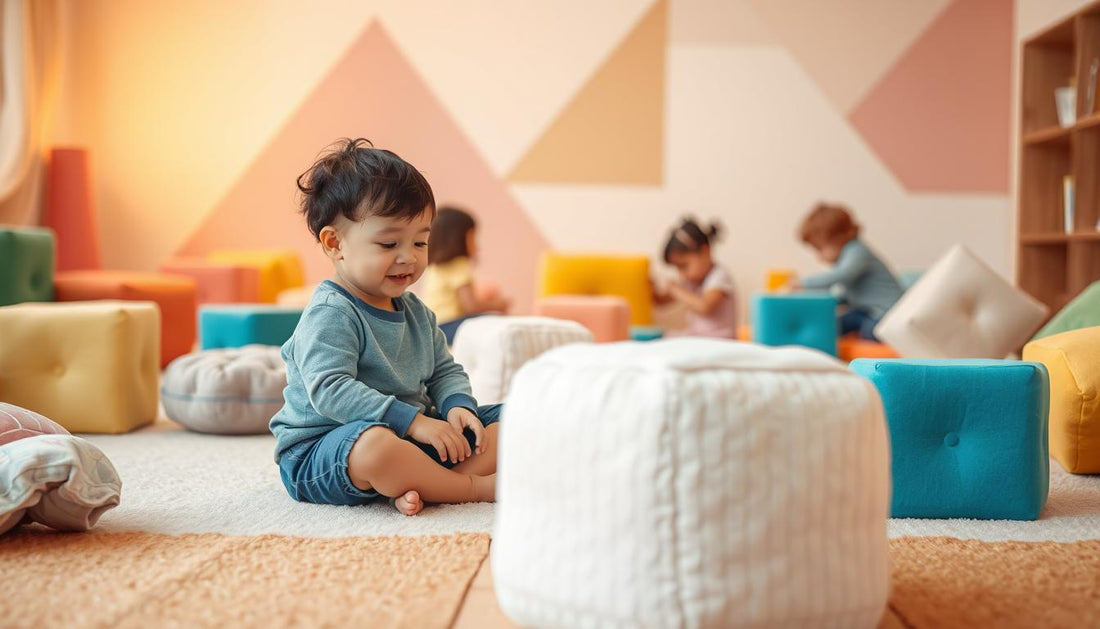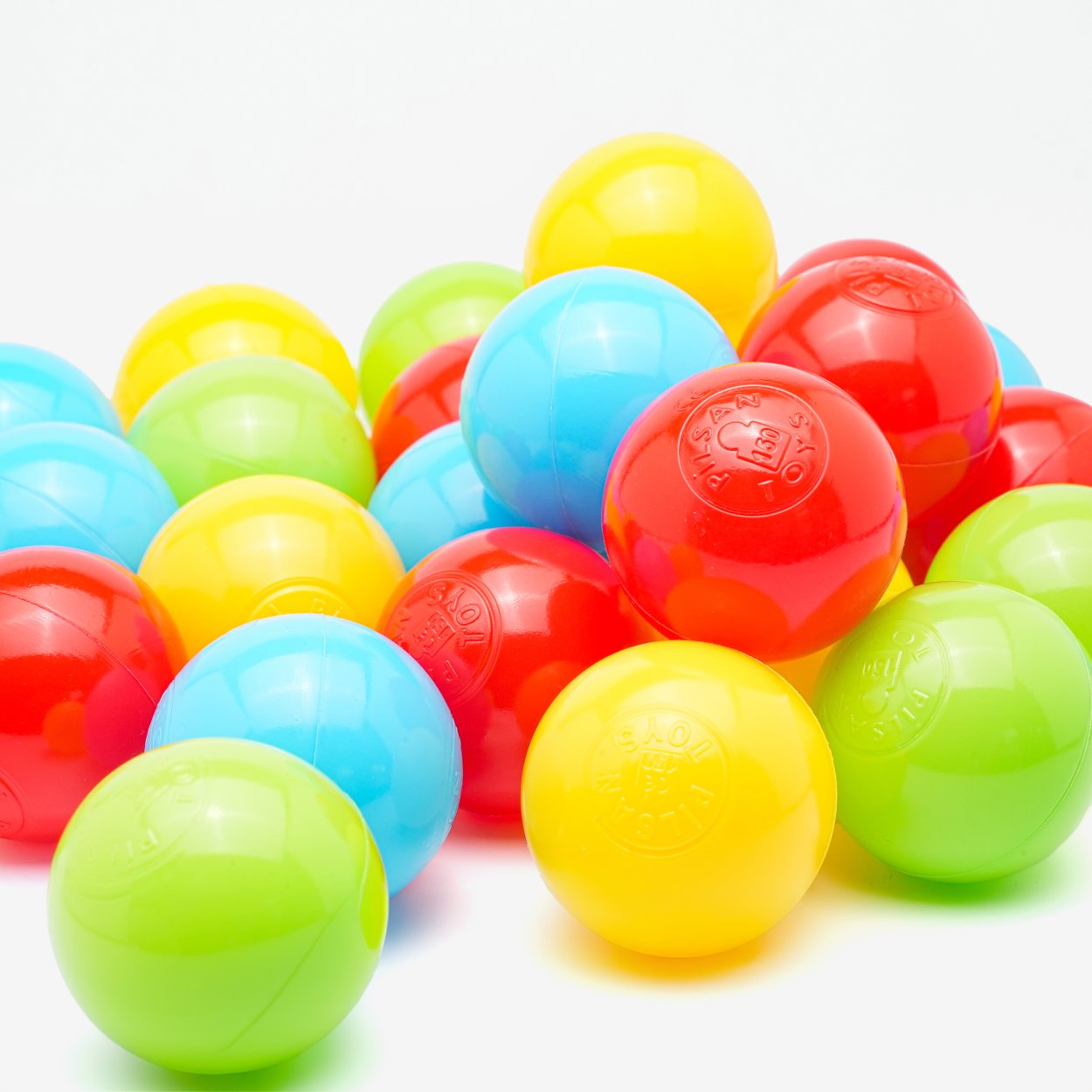
How Soft Play Supports Sensory Development in Children
Share
Soft Play Equipment Provides Essential Support for Children's Sensory Development
Children need sensory development to experience proper growth. Their understanding of surroundings improves through their ability to react to different stimuli. Soft play equipment proves to be an essential resource for sensory development. Kids can safely explore their senses through enjoyable activities provided by soft play equipment.
Our team at Softplay understands the critical role soft play equipment plays in developing children's sensory abilities. Our high-quality soft play equipment stimulates children's creativity and cognitive development.
Key Takeaways
- Children need sensory development for their complete growth process.
- Soft play equipment supports sensory development.
- Softplay's products focus on engaging users while maintaining safety standards.
- Soft play fosters cognitive development and creativity.
- Effective sensory development requires high-quality soft play equipment.
Understanding Sensory Development in Early Childhood
Understanding the development of children's sensory systems is essential. Early childhood sensory development focuses on how children learn about their environment through their sensory experiences.
The Seven Sensory Systems and Their Importance
Children depend on seven sensory systems to develop properly. These include:
- Visual: Processing information through sight.
- Auditory: Interpreting sounds.
- Tactile: Sensing touch and texture.
- Olfactory: Smelling.
- Gustatory: Tasting.
- Vestibular: Understanding balance and movement.
- Proprioceptive: Sensing body position and movement.
These sensory systems enable children to perceive their environment and respond to it.
Sensory Processing and Integration Challenges
Certain children face difficulties with processing and integrating sensory information. Their capacity to process sensory inputs becomes limited because of this difficulty. Their behavior along with their social abilities and learning capabilities can experience negative effects.
How Children Learn Through Sensory Experiences
Children learn and grow through sensory experiences. When children participate in activities that engage their senses their brain connections develop. This helps them understand the world better. Caregivers help kids grow healthily by providing them with various opportunities to integrate sensory experiences.
Soft Play Environments Support Sensory Development Through Stimulating Experiences
Soft play environments provide numerous sensory experiences designed for children. Soft play environments stimulate children's senses which contributes to their growth.
Tactile Stimulation Through Varied Textures and Materials
The surfaces inside soft play areas feature a range of materials such as soft fabrics along with foam elements. This variety gives kids tactile stimulation. The different sensations that kids feel through these activities help them develop a better understanding of touch.
Vestibular Development with Swings and Balance Equipment
The presence of swings and balance beams in soft play areas supports kids' vestibular development. Kids develop better balance and coordination through these activities.
Proprioceptive Input from Climbing, Jumping, and Crawling
As children climb, jump and crawl they receive proprioceptive stimulation. Through bodily movements kids learn their body positioning and movement capabilities.
Visual and Auditory Engagement in Softplay Environments
The decorations in soft play areas feature bright colors while their sound-producing toys engage children's hearing. These elements stimulate children's sight and hearing capabilities. They help with overall sensory development.
Supporting Sensory Regulation Through Safe Exploration
Soft play areas provide safe environments where kids are free to explore and experience various sensations. This supports sensory regulation. It lets kids handle sensory information well.
- Enhanced sensory development
- Improved balance and coordination
- Better sensory regulation
- Children experience more opportunities to receive tactile, vestibular and proprioceptive stimulation
Conclusion: Creating Effective Sensory-Rich Play Experiences
Soft play areas contribute significantly to children's sensory development. They offer different textures and materials. Soft play areas enable children to manage their sensory input effectively.
Kids need good sensory play experiences to develop properly. It helps them use their senses together. Children develop improved capacity for managing diverse stimuli through sensory regulation.
Soft play areas can support many senses. Soft play areas support sensory development by stimulating touch, balance, movement, sight, and sound. When kids engage with specific experiences they develop better interaction skills with their environment.
We need to create play experiences which every child can access. By creating these play opportunities we enable each child to develop their sensory capabilities. Following these early sensory activities children will achieve greater success as they grow older.
FAQ
What does sensory development mean for children and what makes it significant?
Sensory development happens when children learn how to use their senses. It's key for their growth. Sensory development helps children comprehend the world and enables them to engage with their surroundings.
Softplay installations provide numerous textures and colors along with various activities for children to enjoy.
These things excite kids' senses. This activity enables children to improve their ability to process sensory information.
Children explore various textures through play by interacting with materials such as sand and slime.
Children can interact with swings and balance equipment during sensory play. Proprioceptive input comes to children through activities like climbing, jumping and crawling. Softplay features an abundance of colors along with sounds for children to experience visually and auditorily.
Soft play environments allow children to engage in safe exploration and playtime.
It helps them manage their sensory experiences. Children who struggle with sensory processing will find soft play a beneficial environment.
Soft play environments offer significant benefits to children who experience difficulties with sensory processing.
It offers many sensory experiences. Sensory play experiences allow kids to develop their integration abilities and achieve emotional regulation.
You can create sensory-rich play experiences by combining various activities with different equipment.
Include things that touch, move, and balance. Softplay areas provide children with a complete sensory experience which contributes to their growth.

